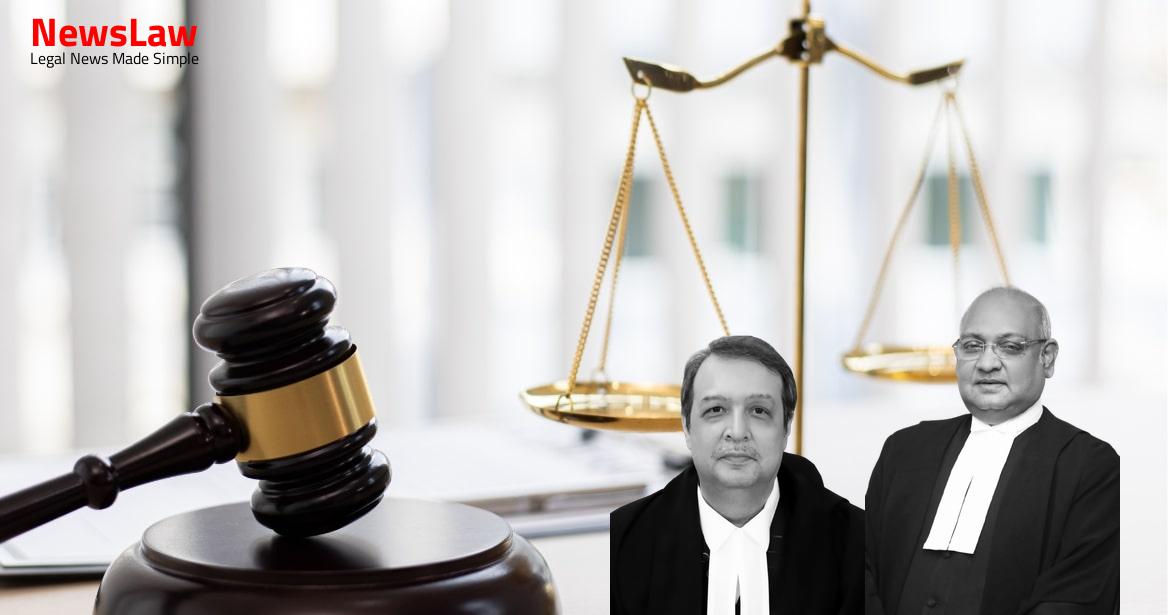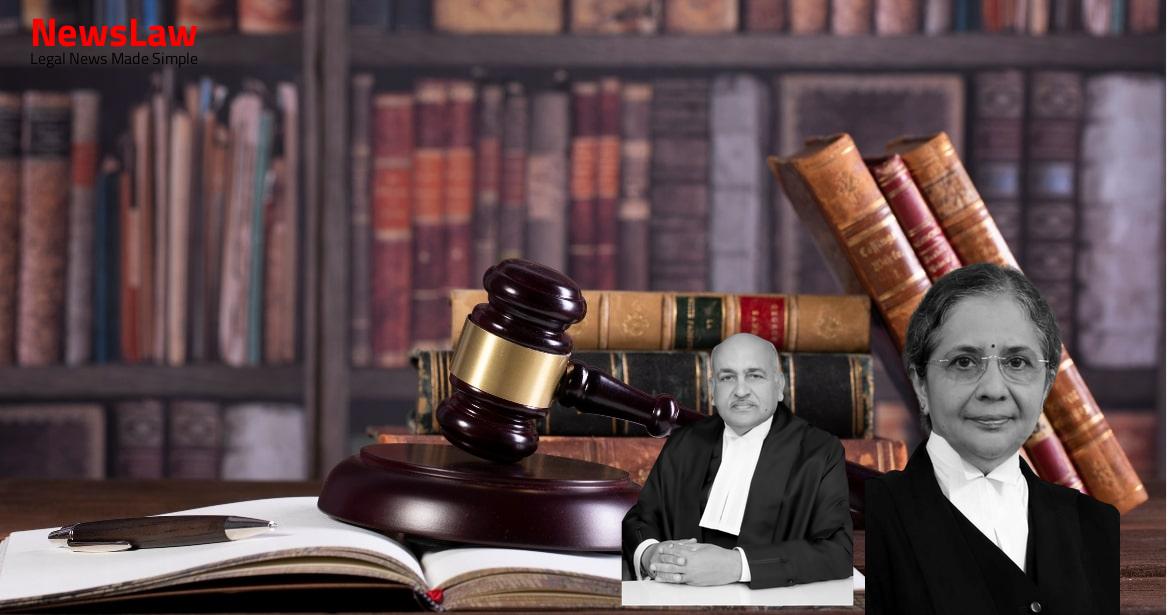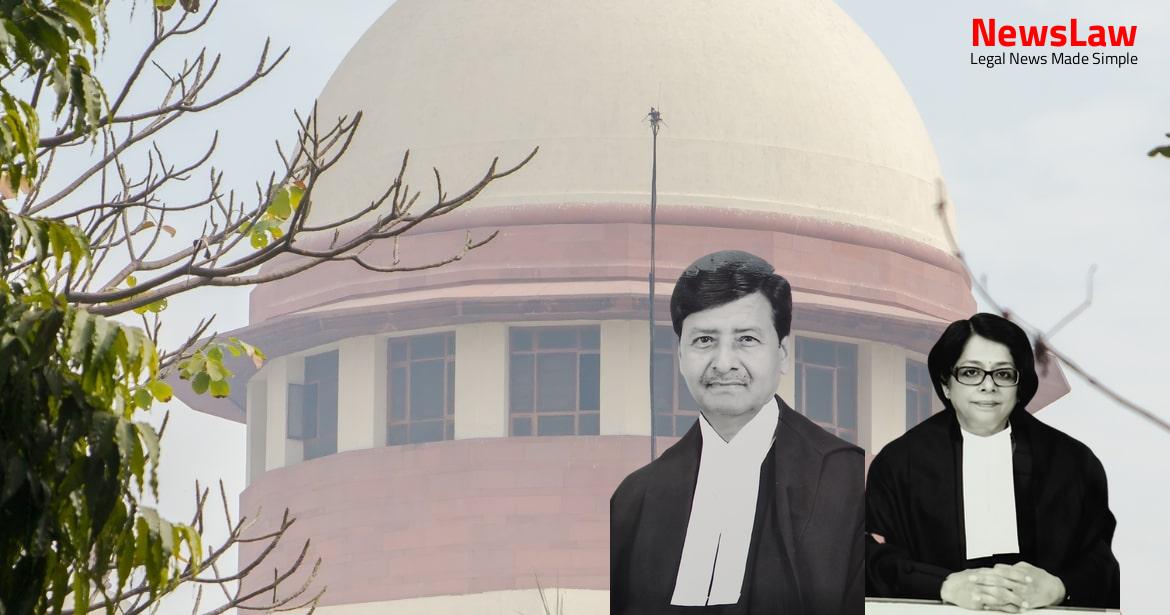Delve into the intricacies of a legal case where the Court meticulously examines the prosecution’s case based on circumstantial evidence. The analysis focuses on the burden of proof on the accused to provide a plausible explanation for the events leading to the alleged crime. The importance of concurrent findings by the Trial Court and the High Court in establishing guilt, along with the application of legal principles for cases reliant on circumstantial evidence, is crucial in determining the outcome of the appeal.
Facts
- The Trial Court disbelieved the story put forward by the private witnesses and the appellant regarding the demise of the victim in the hospital.
- The appellant was found guilty of the offence under Section 302 IPC based on a chain of circumstances and lack of explanation for his wife’s death.
- The appellant’s false plea of going to another place to get medicines without any found in his possession was deemed suspicious.
- The appellant was sentenced to life imprisonment and a fine of Rs. 5,000/- with default stipulations.
- The High Court upheld the Trial Court’s judgment based on the post-mortem report and lack of plausible explanation by the appellant.
- The prosecution case is based on circumstantial evidence.
- The victim, who was the appellant’s 20-year-old wife, died on 22.10.2010 while living with the appellant.
- The victim’s grandfather, PW-1 Md. Akbar Ali, brought her dead body to the police station and filed an ejahar (Ex. 1).
- PW-1 stated that since the marriage, the deceased had been subjected to physical and mental torture by the appellant, leading to her death.
- Investigating Officer, PW-7 Anowar Hussain, conducted an inquest at the police station where injuries were observed on the eyes, cheeks, and neck of the deceased.
- The inquest report (Ex. 2) was prepared in the presence of witnesses.
- The appellant did not present any evidence in his defense.
Also Read: Legal Authority and Res Judicata in Representation Matter
Arguments
- The respondent-State argues that the case is supported by clinching evidence, leading to the guilt of the appellant in the murder of his deceased wife.
- Concurrent findings by the two Courts have upheld the appellant’s guilt.
- The respondent contends that the burden was heavy on the appellant to explain the unnatural death of his wife, which he failed to do.
- The appellant’s alleged alibi of purchasing medicines and being absconding after the incident have been questioned by the respondent.
- The respondent argues for the rejection of the depositions of witnesses PW-1 to PW-6 regarding the illness and hospitalization of the deceased, citing lack of corroborative evidence and contradiction by the inquest report.
- Appellant’s counsel argued that burden under Section 106 of the Evidence Act was heavy on the appellant to explain how the victim sustained injuries and died due to throttling in the matrimonial home.
- Counsel mentioned that prosecution failed to prove the continuous torture allegation and motive behind the incident.
- Emphasized on the need to prove the facts regarding illness and hospitalization as the appellant claimed the deceased died in the hospital due to illness.
- Questioned the authenticity of the date of the appellant’s arrest and the lack of concrete evidence supporting the prosecution’s case.
- Stressed that suspicion cannot replace proof and the burden of proof was on the appellant to explain the circumstances surrounding the death.
- Highlighted the non-explanation or falsity of explanation cannot be solely grounds for conviction.
- Cited various legal precedents to support the arguments against the conviction based on circumstantial evidence.
Also Read: Challenging the Maintainability of Public Interest Litigations: A Court’s Legal Analysis
Analysis
- The prosecution has successfully established the chain of circumstances leading to the guilt of the accused beyond any doubt.
- The accused failed to provide a satisfactory explanation in his statement under Section 313 CrPC.
- The witnesses attempted to mislead by suggesting that the victim died in the hospital due to illness, but their testimonies lacked corroboration.
- The undischarged burden of Section 106 of the Evidence Act operates heavily against the appellant.
- The accused’s false explanation and silence throughout the trial further incriminated him.
- The medical evidence established that the victim died a homicidal death due to throttling.
- The absence of motive does not undermine the prosecution’s case in circumstantial evidence.
- The accused’s shifting alibis and lack of clarity regarding the victim’s hospitalization raised suspicions.
- The rejection of the defense’s objections regarding evidence and site plan was justified.
- The concurrent findings of the Trial Court were upheld without entering into reappreciation of evidence.
- The case is based on circumstantial evidence as there are no eyewitnesses of the occurrence.
- The burden shifts to the appellant under Section 106 of the Evidence Act once the prosecution establishes relevant facts.
- In cases of circumstantial evidence, the onus is on the accused to provide a reasonable explanation.
- Failure to offer a reasonable explanation by the accused can be considered an additional link in the chain of circumstances.
- The Supreme Court has established principles for assessing cases based on circumstantial evidence.
- The absence of motive in a case based on circumstantial evidence does not weaken the prosecution’s case.
- Concurrent findings by the Trial Court and the High Court determine the establishment of guilt in a case.
- Section 106 of the Evidence Act does not relieve the prosecution of its primary duty to prove the guilt of the accused.
- The false explanation or defense provided by the accused can be considered as an additional link in the chain of circumstances.
- The Court analyzes the case based on established principles in dealing with circumstantial evidence.
- The decisions cited by the appellant do not apply to the present case.
- The appeal has failed and is dismissed.
Also Read: Legal Interpretation of Committee Continuity in Municipal Corporations
Case Title: MD. ANOWAR HUSSAIN Vs. STATE OF ASSAM (2022 INSC 1079)
Case Number: Crl.A. No.-000414-000414 / 2019



